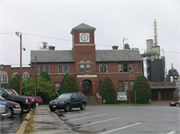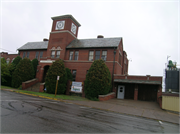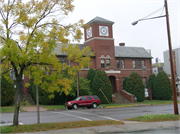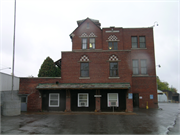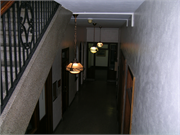| Additional Information: | A 'site file' exists for this property. It contains additional information such as correspondence, newspaper clippings, or historical information. It is a public record and may be viewed in person at the Wisconsin Historical Society, State Historic Preservation Office.
ROUND ARCHED LINTELS W/POLYCHROMY BRICK INFILL. CONCRETE SILL & LINTEL COURSES AND PARAPET COPING. CENTRAL 3 STORY CLOCK TOWER W/DENTILLED BELT COURSES. ROUND ARCHED RECESSED ENTRANCE. SEE WISCONSIN ARCHITECTS' FILE.
In the late 1880s, lumber magnate Henry Sherry transformed the Flambeau River from a flowing stream into a conduit, turning raw energy and trees into paper. He purchased cut-over land, built a dam and lumber mill at Park Falls, and in 1890 brought in the railroad to serve his new business, the Park Falls Lumber and Paper Company. After bankruptcy in the 1897 depression, he reincorporated his mill as the Flambeau Paper Company. Flambeau Paper used two methods for processing pulp, paper’s primary ingredient. In the groundwood process, workers forced logs through grinding stones, producing the coarse grade of pulp fiber used for newsprint, cardboard, and wrapping paper. The sulphite method involved cooking wood in a chemical bath to remove the cellulose fibers, producing a finer, stronger grade of paper.
A 1900 fire destroyed the original paper and pulp mill, so Sherry expanded the plant, constructing this modern office building. Built in two sections in 1925 and 1928, it combines a machine shop and storeroom (now offices) and the office block. Richard Philipp of Milwaukee designed the office block, a handsome brick, side-gabled structure, with a steeply pitched slate roof. At center is a three-stage, hipped-roofed clock tower, whose staircase leads beyond the raised basement to the entry, framed by a broad elliptical archway. Extending to the north is the one-story machine shop and storeroom; its stepped parapet screens a flat roof. The rhythmic pattern of checkerboard blind arches over the windows ties this wing to the more impressive office block. To the south, a small garage wing features a stepped parapet and a pent roof, supported by large brackets. |
|---|

